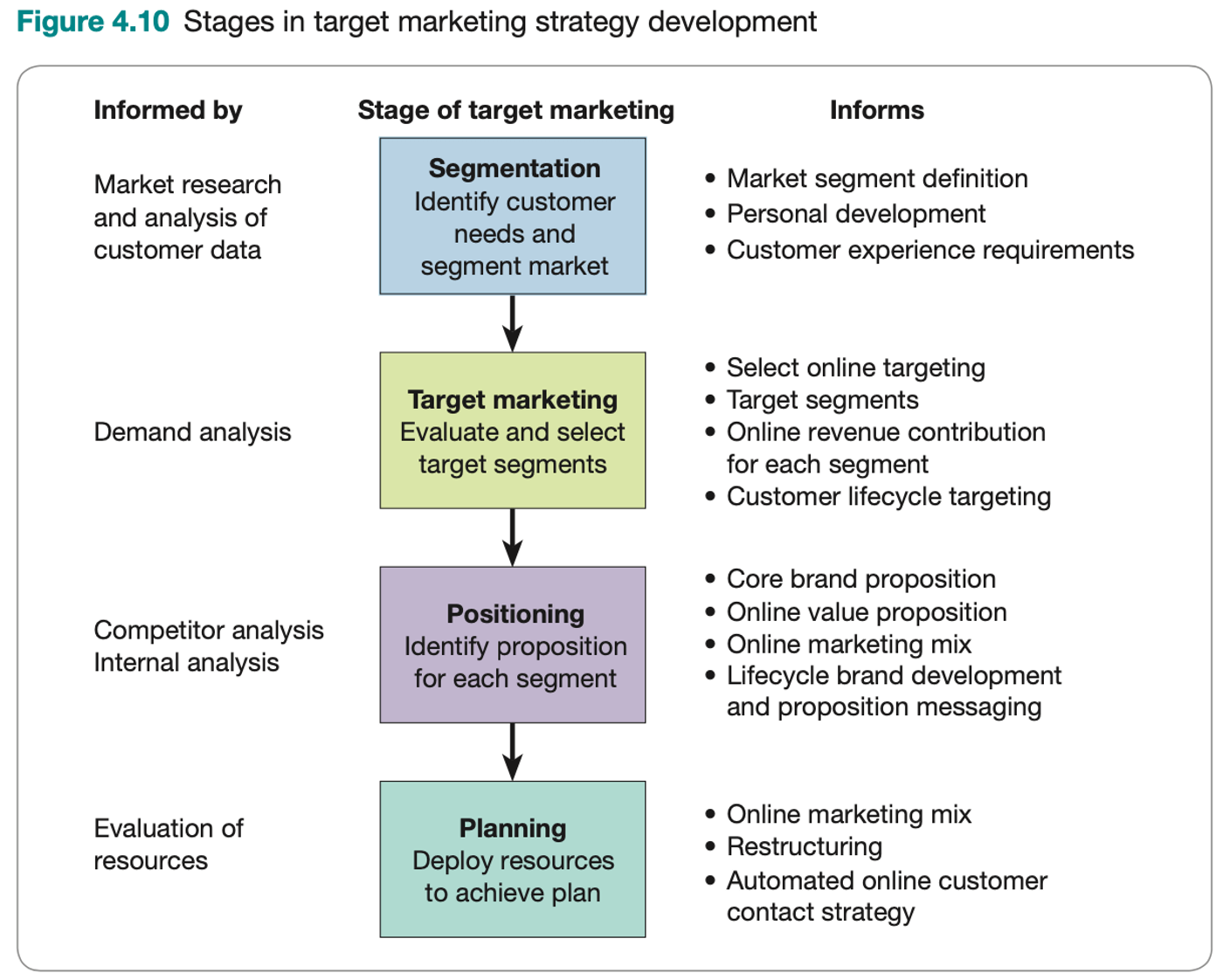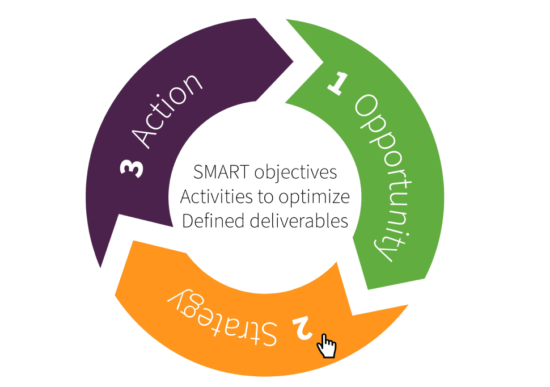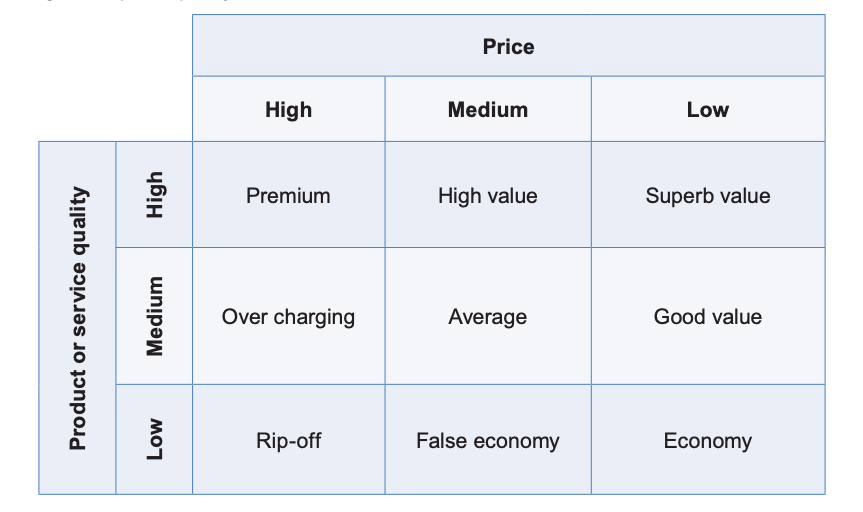

Advanced
![]()
![]()
![]()
![]()
A marketing plan is a bit like a job description for your company. Everyone should have one, but they’re often not fit for purpose, out of date, and reviewed infrequently.
Research has shown that businesses with plans succeed, outperform competitors, and retain staff, more than those with no plan.
Without a plan there’s no direction for the company or its employees, decisions can be uninformed, opportunities can be missed and threats can damage or destroy the business.
Whether you are looking at creating a traditional marketing plan or a multichannel digital marketing plan, we've got resources to help you.
In this article, Annmarie Hanlon recommends 7 simple steps for structuring a classic marketing plan. But for an SME or SMB, you need a little more detail about prioritizing your investment of time and money in your communications channels as we've mentioned.
Our Free marketing plan template download, by our co-founder Dr. Dave Chaffey who developed the RACE Planning Framework, provides a little more detail needed for a 'real-world' plan to grow a business.
Free marketing plan template download
Use our simple three-page Microsoft Word template if you work for a small business who needs to create a simple, practical marketing plan quickly. It's structured in three sections of steps using the acclaimed RACE Growth System for improving marketing results
A marketing plan is your place to document the process of defining and implementing your marketing strategy and creating a roadmap for future growth and business development. A marketing plan should be customer-centred, focused on your target audience and the value propositions you will deliver to them.
The key element of marketing strategy within the plan that you need to compete effectively is the Segmentation, Targeting and Positioning strategy for your brand, known as STP for short. These stages in target marketing strategy development that should be central in your marketing plan are summarized in Figure 4.10 in Digital Marketing: Strategy, Development and Planning created by Dave Chaffey of Smart Insights.

Your plan must reference Segmentation, Targeting and Positioning as essential sections you must cover in a classic marketing plan for a large business. However, for smaller businesses, you also need more practical strategies for how you will reach and engage your audiences using the key digital marketing channels today including search, social media and email marketing and then how you will persuade and convert your audience on a website or on your social pages. So, for a small or medium business (SME or SMB depending on where you are reading) your marketing plan must also include communications strategies to help you achieve your goals. That's why Smart Insights created the RACE planning framework to give guidance on how to best plan and action best practices for these channels.
To structure your marketing plan, we recommend utilizing the Smart Insights RACE Growth System, an easy-to-use strategic marketing framework that helps you identify opportunities, strategies, and actions to help you drive growth, at each stage of your marketing funnel.
As the visual shows, our OSA process, of which you can see examples in different sectors in our editable Word plan templates, is structured in three parts:
As a marketer, every activity will fall into either an opportunity, strategy, or action. With a strong marketing plan in place, you will be able to measure each of these elements, and more importantly, ensure all marketing activities remain integrated.

Some marketing plans, such as this Chartered Institute of Marketing recommendation on How to write a marketing plan define more stages, but particularly for smaller businesses we believe the simpler Opportunity > Strategy > Action enables you to communicate your plan better!
Let's now look at what you need to include in your plan, starting with your opportunities. A marketing plan is not just a list of activities to work on! To identify the opportunities to prioritize and challenges to overcome. You need to start with internal audits, external analysis, and goal setting - to give your marketing a purpose. We recommend summarizing your key issues based on a TOWs analysis which is a powerful form of SWOT analysis explained in our post giving SWOT analysis template examples.
Through our RACE Planning Framework, you can access tools and templates designed to help you optimize across 25 opportunities, integrated across each stage of RACE, which you can see in the infographic below:

Starting with these holistic approaches, you will quickly identify opportunities for growth and can plan strategies and actions that help you achieve your vision for your business. That's why opportunities are the first step in our OSA cycle.
Now you know what you want to do, strategy is working out how to achieve your goals in an efficient and effective manner. To do so, you'll likely lean on guides, templates, and models to inform your strategy.
Making good business decisions to inform your budgets, investment priorities, and key metrics are all elements of a successful marketing strategy.
Of course, the final stage of any marketing strategy is putting it all into place!
To help you manage your time and marketing outputs, our RACE Growth System is structured around short 90-day planning cycles. This means you will see quarterly growth, as well as setting longer-term annual goals.
Quarterly measurement and reporting allow marketers and business owners to spot trends and make optimizations in a shorter timeframe too, to keep cycling customers through your dedicated marketing funnel experience.
It can be daunting to develop a marketing plan for the first time, so let's walk through the basics together. If you're looking for a practical, simple, data-driven marketing plan, these 7 factors will help you create and action your plan with success.
A good plan starts by asking 'Where are we now?'. Gain an overview via your customers, but don’t forget to ask the right questions. One of my pet hates is the ‘hypothetical question’ e.g. A hotel asking “if you would stay here again?” It’s possible you would stay there again, but if it’s been a one-off visit it’s very unlikely it will actually happen. Removing hypothetical questions ensures you capture facts, not fiction.
If you’ve got a start-up business or are looking at a marketing plan for a totally new area, many other research resources are available including online reports, insights via trends and conferences. This informs your business decision and ensures the plan is fundamentally sound.
After you’ve captured customer insights, the next step is a comprehensive review or audit of the business. Most countries publish statistical data on businesses in their region. This can tell you the number of businesses in specific sectors, average numbers of employees, average earnings, average income per household and more. This valuable information highlights market values, market potential and opportunities. This enables you to understand where your business sits in its market sector and the market share available.
A key element of the audit is the SWOT and whilst you and many marketers are familiar with the SWOT analysis, you may be less familiar with the McKinsey 7S framework of business. Taking a holistic look at the business, thinking about Strategy, Structure, Systems, Staff, Style, Skills and Shared values forms a base for your SWOT. Business members can access a 7S and SWOT template in the smart insigths Business marketing plan guide.
Part of a marketing audit is competitor benchmarking. Really understanding what the competitors offer. The more you understand how they work, the more likely you are to be able to predict their next move. You won’t be one of these companies that says “we never saw it coming”. Tools such as Google Alerts help you embed this as an automatic ongoing process.

One of my clients ensured they always got the early news on their key competitor by buying some of their shares! It meant they had access to latest reports, and newsletters and could attend annual meetings to hear what other shareholders thought. This was all for an investment of £150.
It’s easy to create general objectives; it’s harder to develop SMART objectives.
Taking this one stage further, businesses that use numbers alone often miss key values inside the business. It’s easy to become numbers-driven; it’s harder to create ‘softer’ objectives. In Emarketing Excellence (2022), Dave Chaffey and PR Smith developed the 5s model, initially as a mechanism for reviewing websites. I’ve used this for many years to develop business objectives. It tends to challenge the thinking within a business and gets the owners and managers considering the business as a whole, rather than sales alone.
Look at your business. Do you have SMART objectives for:
Key strategic initiatives for your business will include one or more of these options:
When you know the strategic initiatives the business is taking, it’s easier to segment your customer base, whether you’re B2B, B2C or a blend of both. You can use the mnemonic SUPERB to identify your customer segments:
Growing a business always involves finding new customers, this may be different segments or markets and may encourage your business to look at product development.
What opportunities are there in your business to:
Pricing is a critical area in any business. Kotler (1988) described nine marketing mix
strategies on price quality, which we look at in detail in the Business marketing plan guide for Business members, to support your pricing strategy development.

A pricing matrix is a really useful tool for product marketers or managers because it helps you identify opportunities within your product and pricing strategies. Don't forget to research which of these strategies are your main competitors using too and make sure to use key messages to help differentiate yourself.
The key to making it happen is to create a detailed marketing action plan. If you don’t have time to conduct each step yourself, you can explore other options and contract out specific tasks to an external consultant or agency.
I have found that an Action Plan that includes more detail, nominates someone to do the work and sets dates by when it should be completed, is more likely to get done than a loose set of instructions. A good action plan becomes ’work instructions’ for different people.
Busy marketing managers may enlist support from the admin team who often relish the opportunity to carry out new tasks, as long as they have a detailed brief. Or for more specialized work, marketing managers may wish to enlist an Agency.
The final step is about monitoring action, managing the process and measuring results. The 7 steps to make your plan happen are:
As the world of digital marketing continues to develop, many find that particular functions within marketing require their own planning document. See examples of where this may be useful below:
But, remember, it is recommended to define one flagship plan for the whole team, for governance and accountability, before branching out into secondary planning.
One final tip; set a start and an end date for creating and launching the marketing plan, if not, the audit stage could continue indefinitely! Download your free guide and get started today.
Free marketing plan template download
Use our simple three-page Microsoft Word template if you work for a small business who needs to quickly create a simple, practical marketing plan quickly. It's structured in three sections of steps using the acclaimed RACE Growth System for improving marketing results
By Annmarie Hanlon
Annmarie Hanlon PhD is an academic and practitioner in strategic digital marketing and the application of social media for business. Dr Hanlon has expertise in the strategic application of social media for business and the move from digitization, to digitalization and digital transformation for business. Her expertise spans consumer touch points, online customer service, the use of reviews, the role of influencers, online engagement and digital content. You can follow her update on Twitter https://twitter.com/annmariehanlon
This blog post has been tagged with:
Marketing campaign planning ToolkitTurbocharge your results with this toolkit containing 7 resources

The Marketing Campaign Planning toolkit contains:



Start your Digital Marketing Plan today with our Free membership.